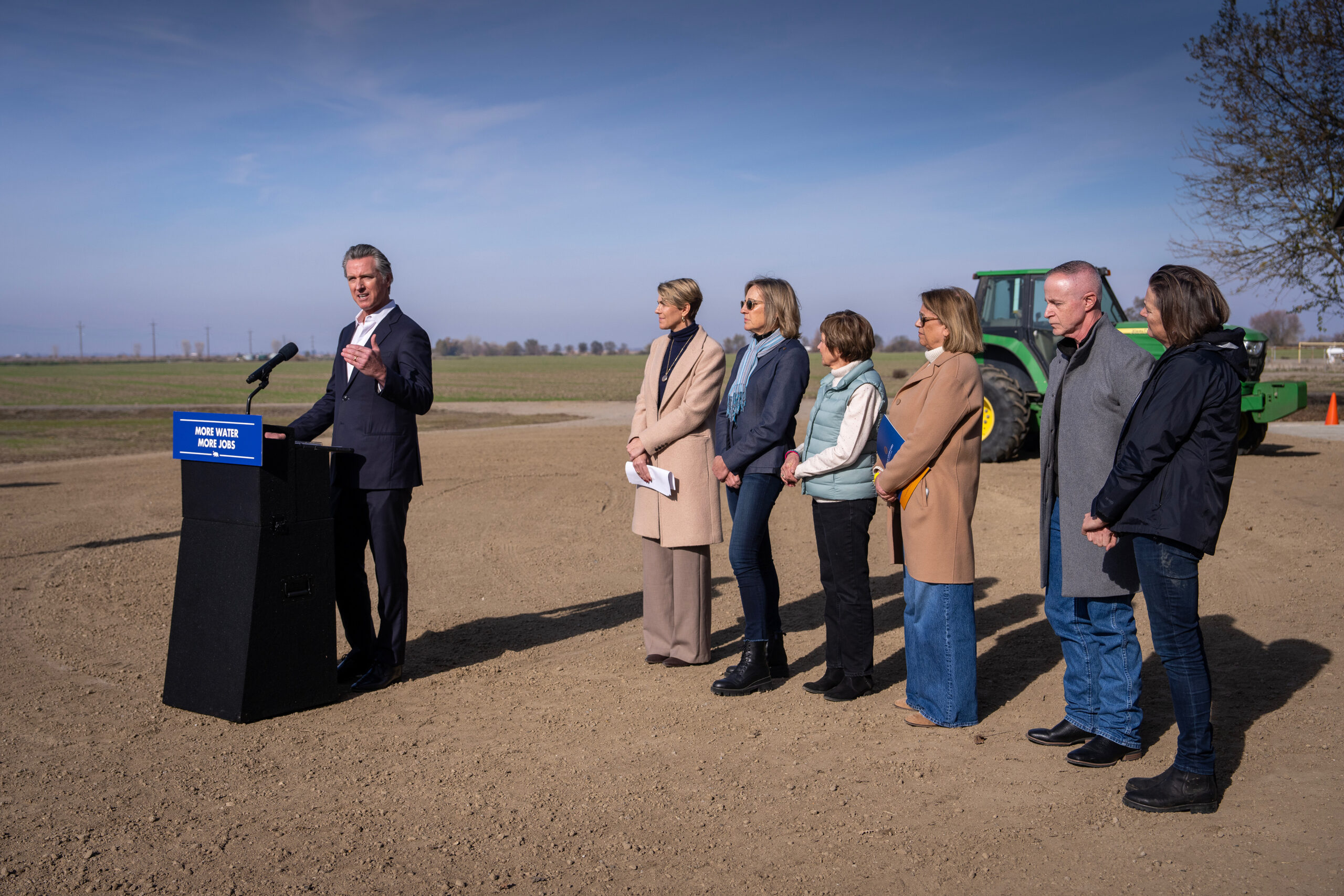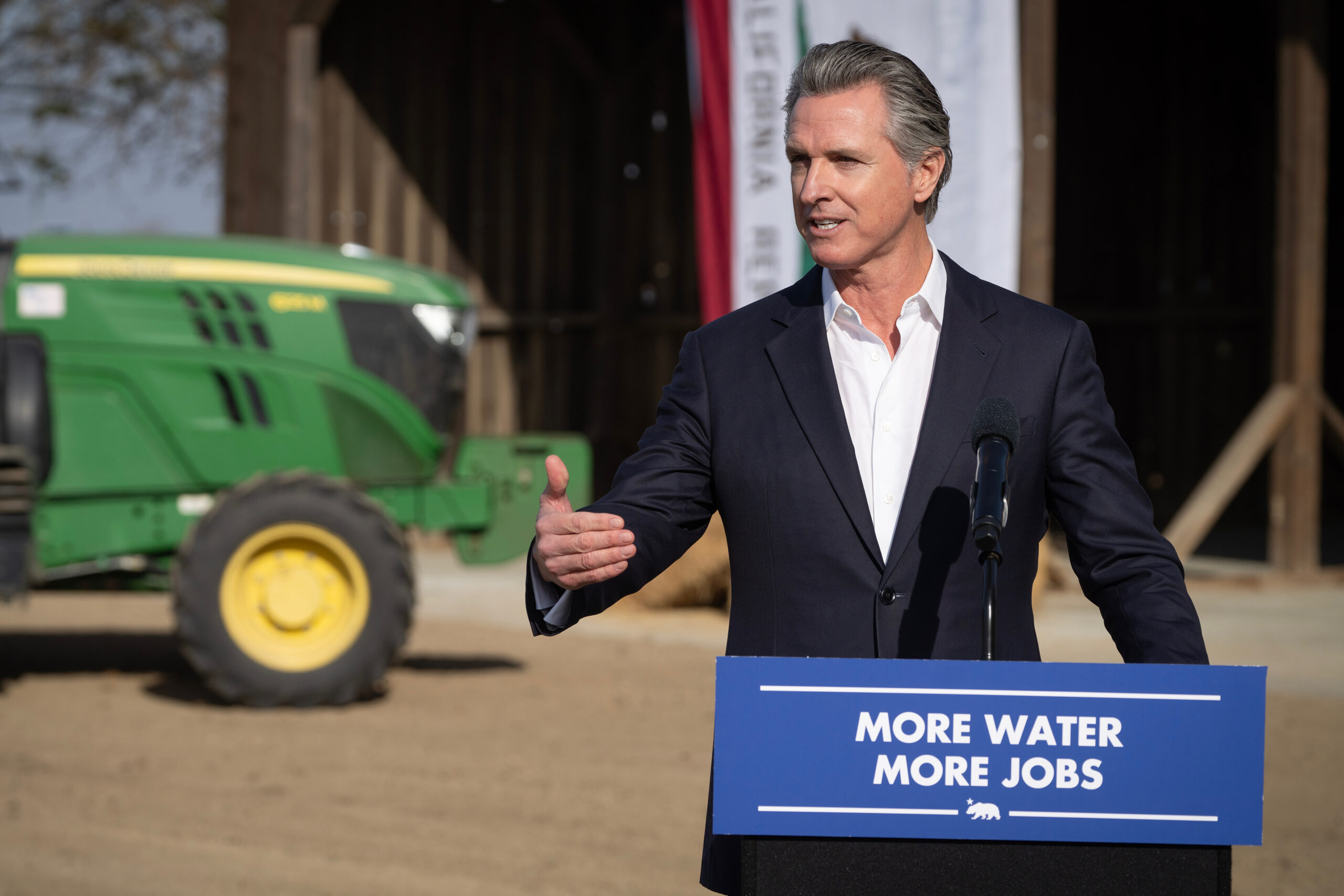More water, more jobs: Governor Newsom visits historic farm in Colusa to highlight efforts to build water infrastructure, faster and create jobs
Governor Newsom made the fourth stop as part of his California Jobs First ‘tour’ to highlight his Administration’s focus on building more critical water infrastructure and creating jobs.
COLUSA – Governor Gavin Newsom today continued his California Jobs First ‘tour’ with a visit to a historic farm in the northern part of the state in Colusa where he highlighted his Administration’s efforts to maintain the state’s water supply. At Davis Ranches, a farm started in the 1800s, the Governor learned about its sustainable operations that help the ranch save water and restore crucial floodplain habitat. The Governor also met with local leaders of the California Jobs First Capital Region collaborative to hear from them about their economic priorities.
The Governor’s stop today was just miles away from where construction of the Sites Reservoir is planned. Sites Reservoir is critical to California’s Water Supply Strategy and meeting California’s goal of expanding above and below ground water storage capacity by 4 million acre feet. Late last year, the Governor certified the project for streamlining, saving the project from years of litigation delays.
Governor Newsom’s vision for adapting to the state’s hotter, drier future combines multiple approaches to save water, including promoting sustainable agricultural practices and building vital water infrastructure. While at Davis Ranches, the Governor announced new groundwater recharge actions to help accelerate projects critical to replenishing the state’s groundwater supplies. About 85% of Californians rely on groundwater for some portion of their water needs.
“The future of California’s water supply flows right through Colusa County – and with that comes enormous economic opportunity and more jobs. Farms like this one and all across the state have led the charge by transitioning to smart water practices that not only save water but also conserve critical habitats. But we have to do more to protect our water supply for generations to come. That’s why we’re building more critical water infrastructure, faster to be able to store and move water for the hotter hots and the drier dries. And it’s why we’re doubling down on efforts to replenish the state’s critical groundwater supplies. It’s going to take an all-of-the-above approach — and that means more water and more jobs for Californians.”
Governor Gavin Newsom

Building water infrastructure is critical to Governor Newsom’s build more, faster agenda delivering infrastructure upgrades across the state. Find projects building your community at build.ca.gov.
Creating jobs in Colusa and the Capital region
This was the fourth stop of the Governor’s California Jobs First tour after he visited Fresno, Kern County and the southern border region in recent weeks. Last month, Governor Newsom unveiled the framework for the California Jobs First Economic Blueprint.
The Capital Region – composed of Colusa, El Dorado, Nevada, Placer, Sacramento, Sutter, Yolo, and Yuba counties – is home to a diverse range of industries, from natural resources to biotechnology and manufacturing, that have the potential to drive job growth and create a resilient local economy. By leveraging existing strengths, the region plans to boost business growth, generate more high-quality jobs, and increase access to these jobs. Their plan hones in on four high-potential tradable sectors – business services, precision manufacturing, working lands and research and development.
For every job created in one of these strategic sectors, between 1.6 to 3.1 additional jobs are generated in the broader economy, fostering stronger and more sustainable economic growth.

More water faster
Last year, California increased groundwater storage for the first time since 2019 – a direct result of state and local work to store more water underground. With the actions the Governor announced today, the state is doubling down on that work: unveiling a new dashboard to help boost recharge efforts, exploring ways to reduce permitting times to 60 days and making it easier for local water districts to pursue recharge opportunities.
In addition to continuing to encourage smart water practices and groundwater recharge projects, the Governor has championed two major water projects that are key to California’s Water Supply Strategy:
The Sites Reservoir will capture water during wet seasons and store it for use during drier seasons – holding up to 1.5 million acre-feet of water, enough for 3 million households’ yearly usage. It has received a total of $43.7 million in early funding from the state. In all, Sites is eligible for $875.4 million of Proposition 1 funding. Total project cost is estimated at $4 billion. Earlier this year, Sites cleared another major hurdle thanks to the Governor’s infrastructure streamlining law that is helping the state build more, faster.
The redesigned Delta Conveyance Project would upgrade the State Water Project, enabling California’s water managers to capture and move more water during high flow atmospheric rivers to better endure dry seasons. The tunnel, a modernization of the infrastructure system that delivers water to millions of people, would improve California’s ability to take advantage of intense periods of rain and excess flows in the Sacramento River. It would also help protect against the risk of an earthquake cutting off water supplies to millions of Californians, currently a 72% chance of 6.7+ magnitude in the area by 2043. Several water agencies representing more than 2 million Californians have voted in support of the additional funding for the project, and the Metropolitan Water District is expected to vote on funding today.
About GO-Biz
The Governor’s Office of Business and Economic Development (GO-Biz) serves as the State of California’s leader for job growth and economic development efforts. GO-Biz offers a range of services to business owners including: attraction, retention and expansion services, site selection, permit streamlining, clearing of regulatory hurdles, small business assistance, international trade development, assistance with state government, and much more. For more information visit the GO-Biz website.
Willie Rudman
Deputy Director of Communications
Email, HERE

